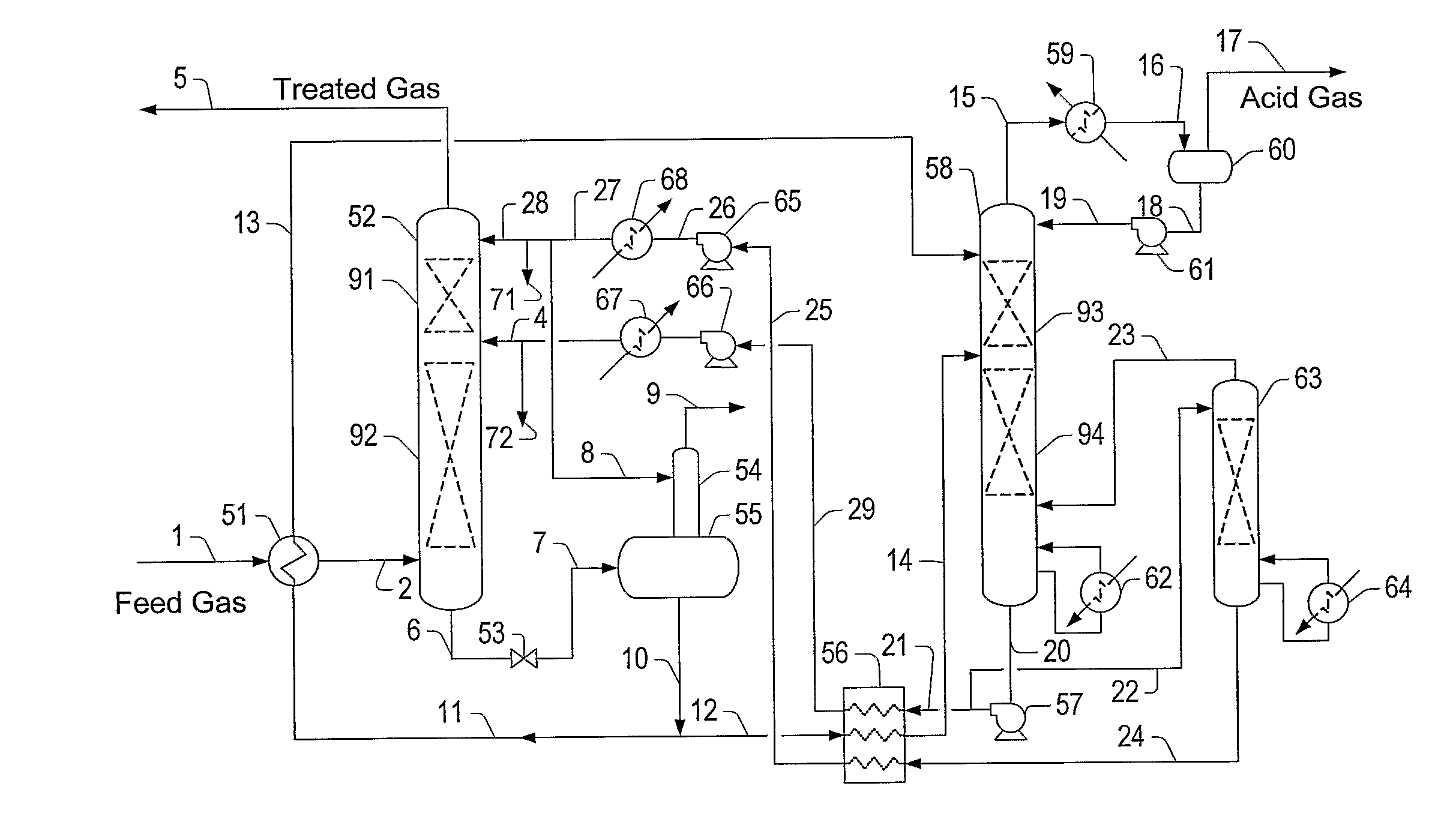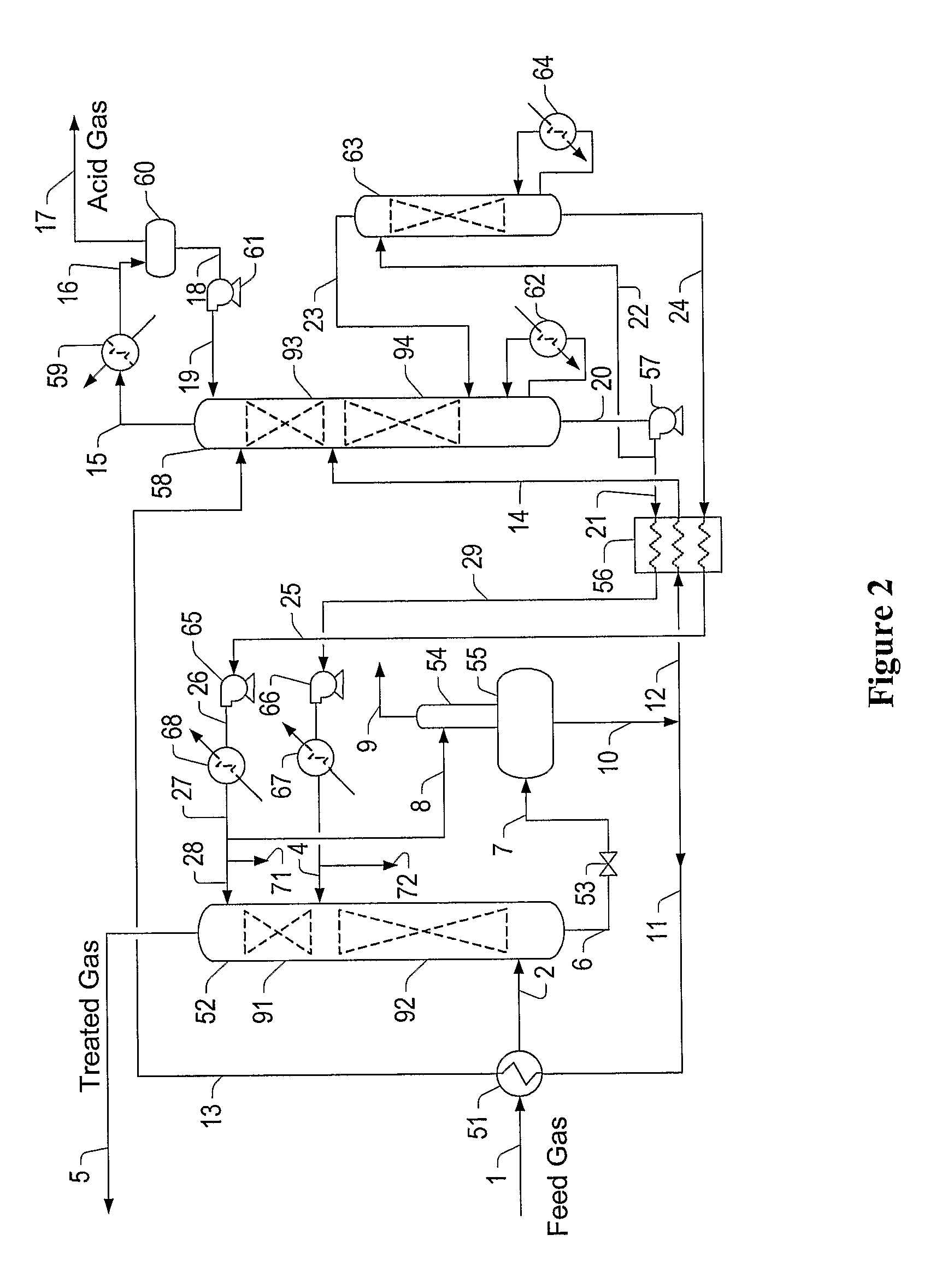Configurations and Methods for Acid Gas Absorption and Solvent Regeneration
a technology of acid gas absorption and solvent regeneration, which is applied in the direction of liquid degasification, separation processes, dispersed particle separation, etc., can solve the problems of high energy demand for heating and cooling processes in the amine regeneration unit, high cost of ion exchange resin, and need for regenerated or replaced, so as to reduce the duty of reboiler and condenser.
- Summary
- Abstract
- Description
- Claims
- Application Information
AI Technical Summary
Benefits of technology
Problems solved by technology
Method used
Image
Examples
Embodiment Construction
[0027]The inventor has discovered that acid gas absorption and solvent regeneration can be performed in an economically attractive and conceptually simple manner in which the acid gas is adsorbed in a two-stage absorber using a lean (e.g., with 0.01 or higher mole of H2S to mole of amine) and an ultra-lean solvent (e.g., with 0.005 or lower mole of H2S to mole of amine) which are produced in a refluxed and a non-refluxed regenerator, respectively. Most preferably, the refluxed regenerator has two stages and is operated such that cool rich solvent is employed as reflux while heated rich solvent provides at least a portion of the stripping medium. Thus, the reboiler and condenser duties are significantly reduced, even though the stripping can be performed at a higher temperature.
[0028]In contrast, a substantial amount of excess steam in the overhead of currently imown regenerators is required to obtain an adequate degree of stripping in a regenerator. Further, the minimum amount of he...
PUM
| Property | Measurement | Unit |
|---|---|---|
| inlet temperatures | aaaaa | aaaaa |
| inlet temperatures | aaaaa | aaaaa |
| temperature | aaaaa | aaaaa |
Abstract
Description
Claims
Application Information
 Login to View More
Login to View More - R&D
- Intellectual Property
- Life Sciences
- Materials
- Tech Scout
- Unparalleled Data Quality
- Higher Quality Content
- 60% Fewer Hallucinations
Browse by: Latest US Patents, China's latest patents, Technical Efficacy Thesaurus, Application Domain, Technology Topic, Popular Technical Reports.
© 2025 PatSnap. All rights reserved.Legal|Privacy policy|Modern Slavery Act Transparency Statement|Sitemap|About US| Contact US: help@patsnap.com



